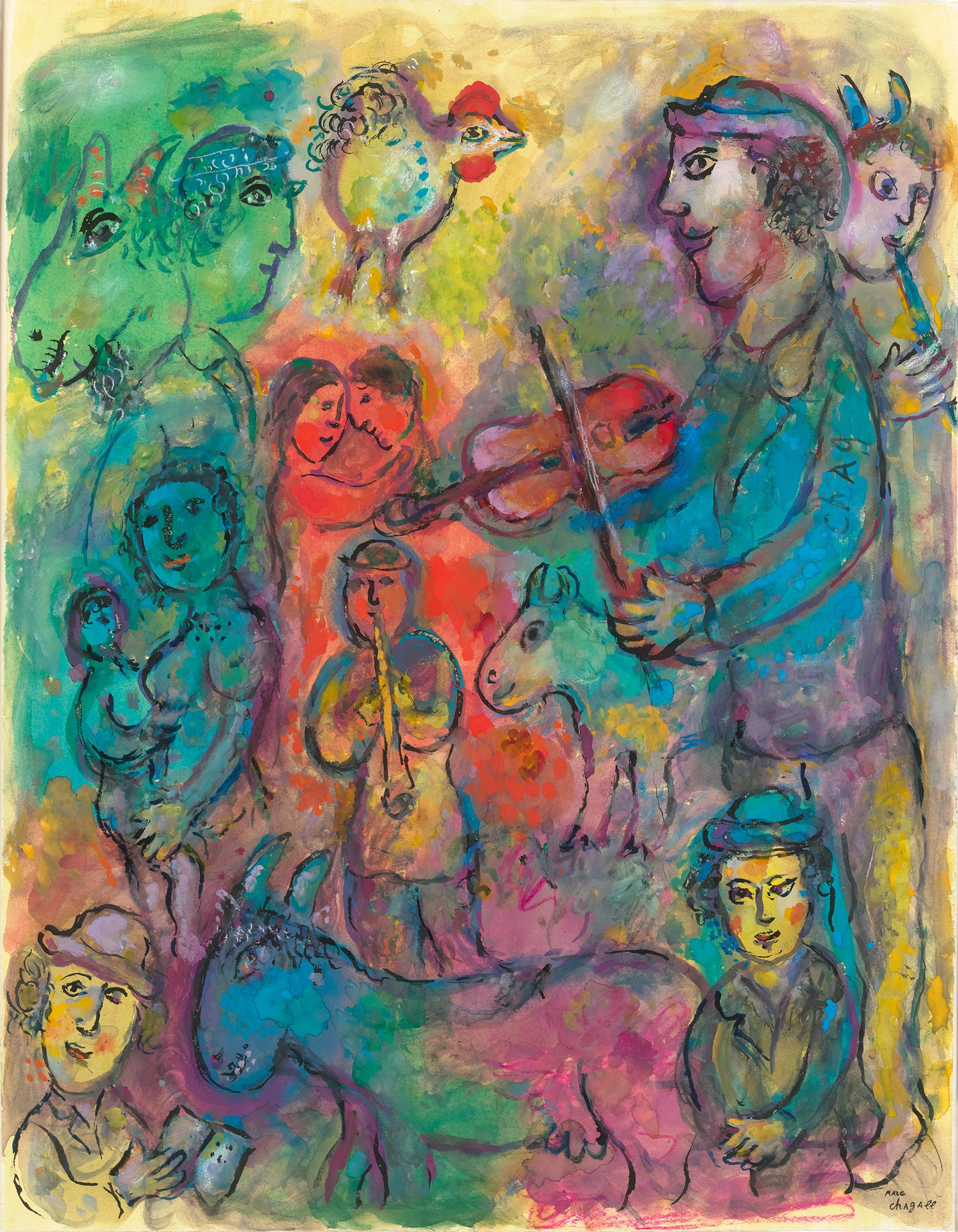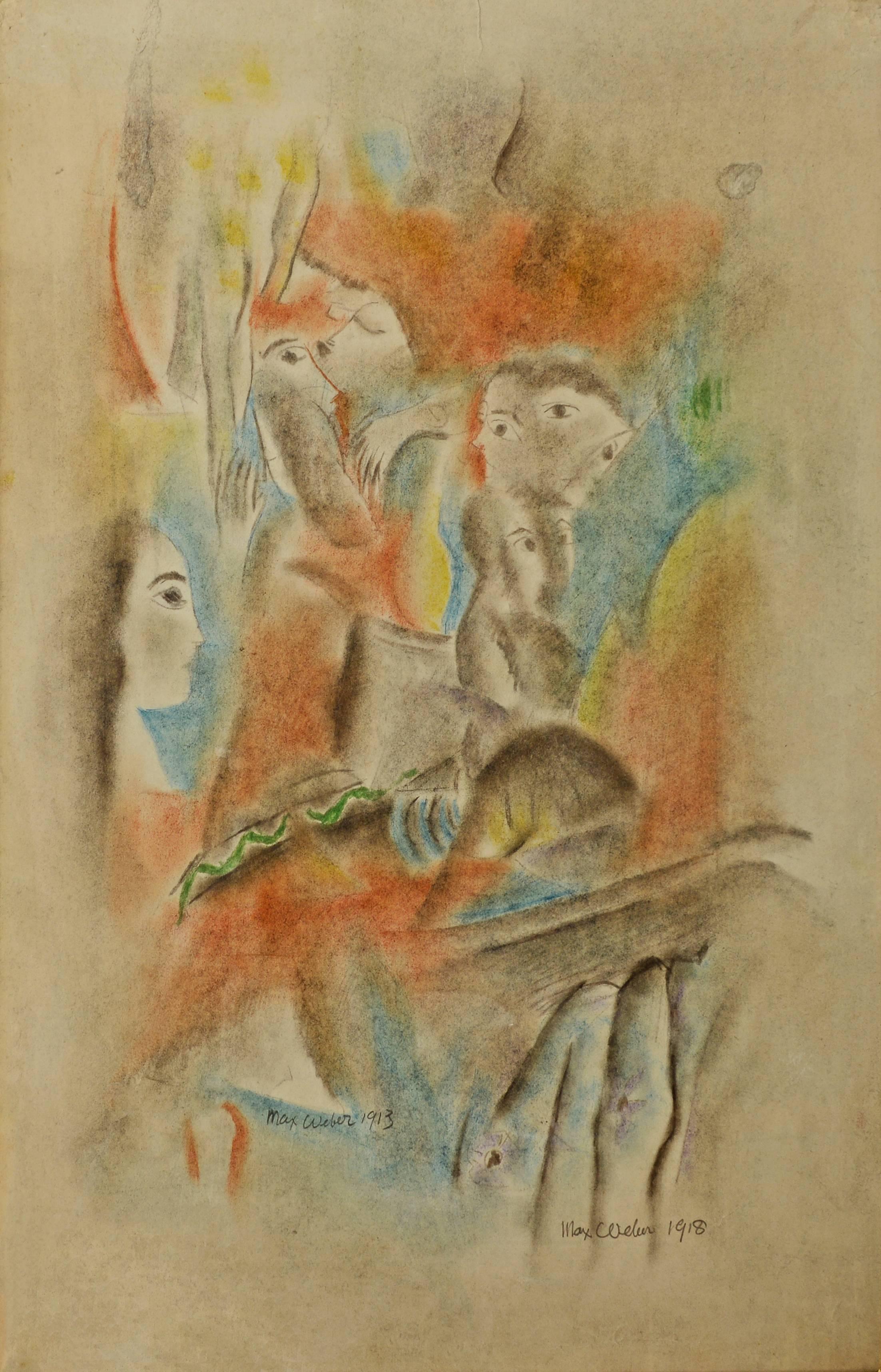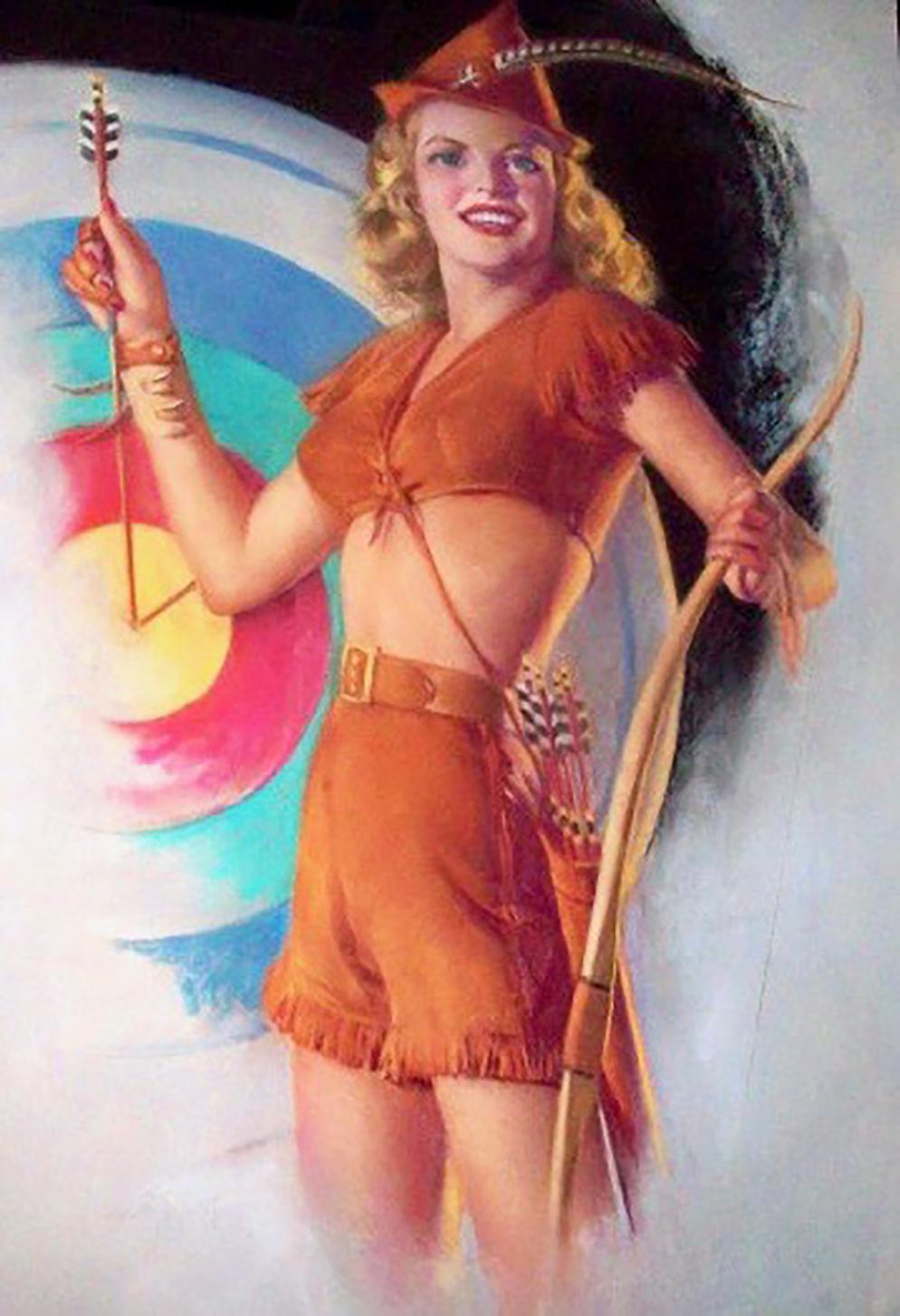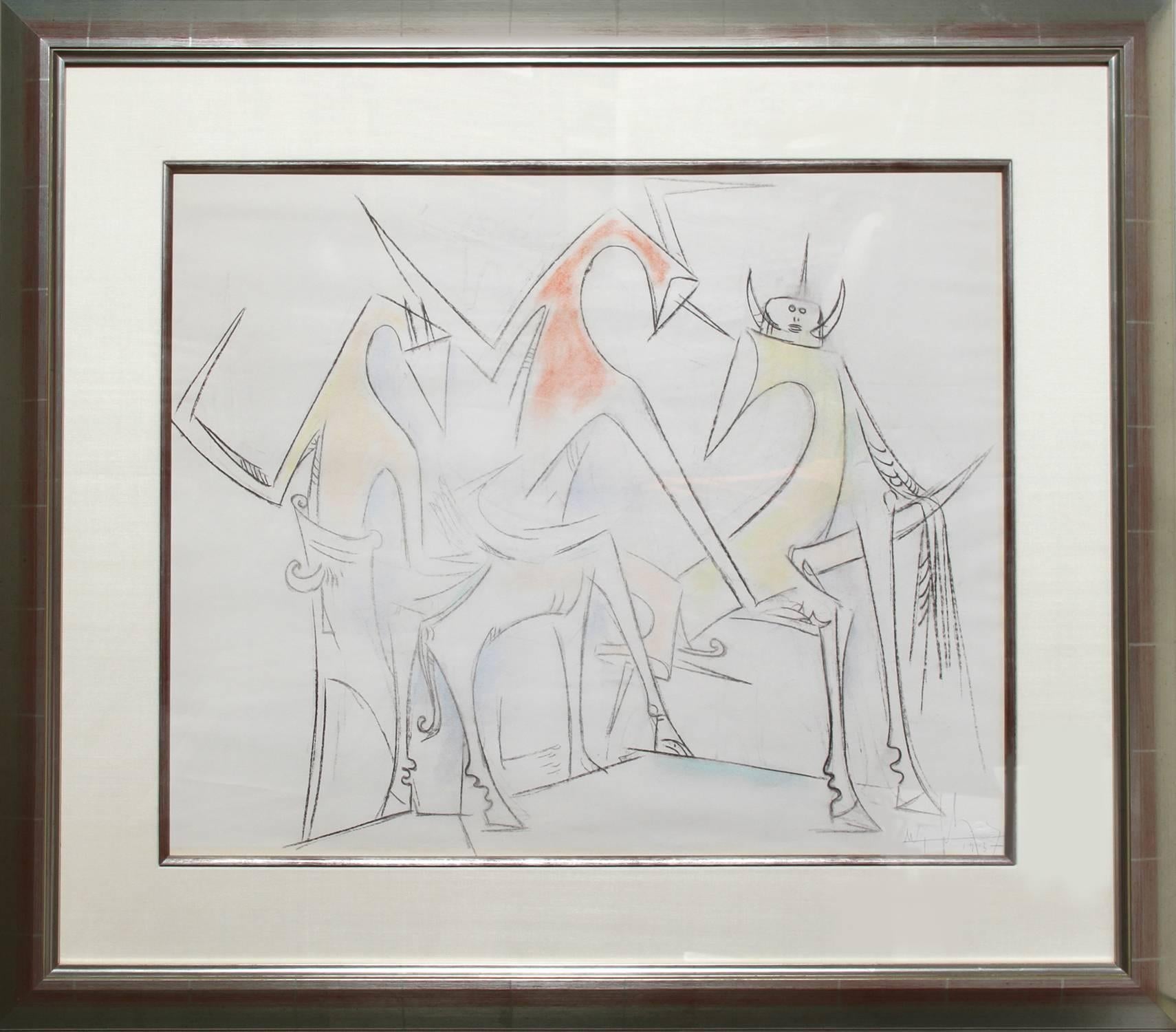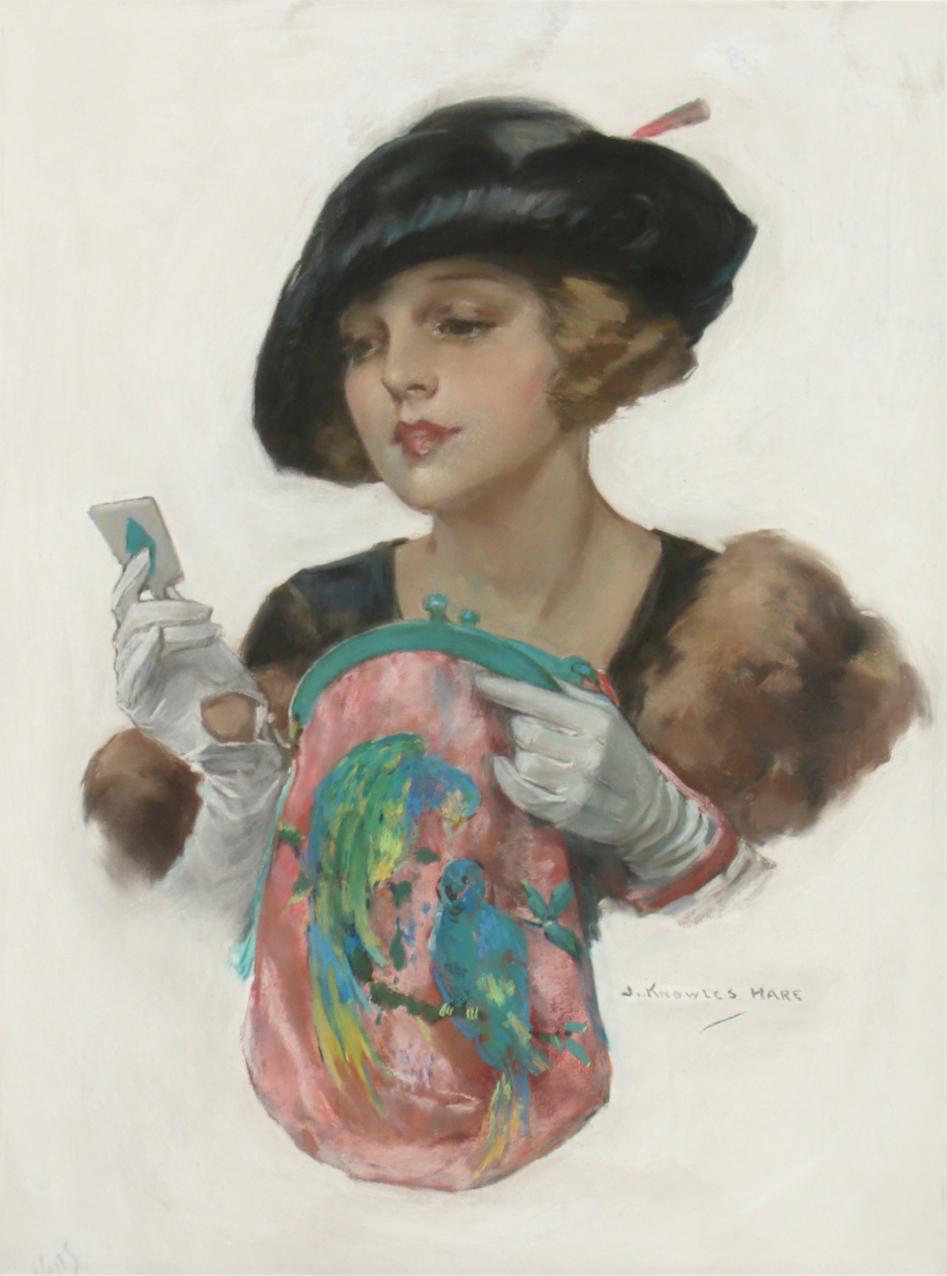Items Similar to Rat of the Sabines - Sanguine Drawing End of 18th Century
Want more images or videos?
Request additional images or videos from the seller
UnknownRat of the Sabines - Sanguine Drawing End of 18th CenturyEnd of 18th Century
End of 18th Century
About the Item
Rat of Sabinesis an original sanguine drawing on thick cream-colored paper, realized by an anonymous French artist of the end of XVIII century.
A superb original drawing with skilled use of the nuanced, representing the mythological scene of the rat of Sabines or the Proserpina's kidnapping. Although the tragic mood, the scene has something of idyllic and sugarcoated, in the typical Neoclassical style.
A virtousic use of the light and shadows presents a wide gradient of tones and a balanced composition that demonstrates a great sensibility near to that of photographers.
A really pleasant old master's artwork, in very good conditions, except for foxing on the margins and some minor stains and yellow stripes on the right margin, some defect do not affect the image that has preserved its beauty.
- Creation Year:End of 18th Century
- Dimensions:Height: 6.82 in (17.3 cm)Width: 8.98 in (22.8 cm)Depth: 0.04 in (1 mm)
- Medium:
- Period:
- Condition:Insurance may be requested by customers as additional service, contact us for more information.
- Gallery Location:Roma, IT
- Reference Number:
About the Seller
4.9
Platinum Seller
These expertly vetted sellers are 1stDibs' most experienced sellers and are rated highest by our customers.
1stDibs seller since 2017
6,782 sales on 1stDibs
Typical response time: 3 hours
- ShippingRetrieving quote...Ships From: Rome, Italy
- Return PolicyA return for this item may be initiated within 14 days of delivery.
More From This SellerView All
- Portrait of Christ - Original Drawing - Early 20th CenturyLocated in Roma, ITPortrait of Christ is an original artwork realized by the Unknown Artist in the early 20th Century. Original colored pencil and pastel drawing o...Category
Early 20th Century Modern Figurative Drawings and Watercolors
MaterialsPastel, Pencil
- Portrait of Christ - Original Drawing - Early 20th CenturyLocated in Roma, ITPortrait of Christ is an original artwork realized by the Unknown Artist in the early 20th century. Original colored pencil drawing on ivory-colored paper, glued on colored cardboa...Category
Early 20th Century Modern Figurative Drawings and Watercolors
MaterialsPen, Pastel
- The Landscape - Original Drawing by Norbert Meyre - Mid-20th CenturyLocated in Roma, ITThe Landscape is an original Drawing on paper realized by French painter Norbert Meyre in the mid-20 century. Drawing in pencil and pastel.. The artwork is represented through deft...Category
Mid-20th Century Modern Landscape Drawings and Watercolors
MaterialsPastel, Pencil
- Sketches of Female Nudes - Original Pencil Drawing by J. Dreyfus-SternBy Jean Dreyfus-SternLocated in Roma, ITSketches for female nudes is an original artwork realized by Jean Dreyfus-Stern in 1916. Pencil of paper. Hand-signed in pencil by the artist on the lower margin. Dated in pencil...Category
1910s Figurative Drawings and Watercolors
MaterialsPencil, Pastel, Carbon Pencil
- Kimonos at Versailles - Original Pastel Drawing by Emile Deschler - 1984By Emile DeschlerLocated in Roma, ITKimonos at Versailles is an original artwork realized in 1984 by Emile Deschler. Pastel on cardboard. Hand-signed and dated on the lower right. Very good conditions. Emile Deschl...Category
1980s Modern Figurative Drawings and Watercolors
MaterialsPastel
- Theatrical Costumes - Original Pencil and Watercolor by Emile Deschler - 1980sBy Emile DeschlerLocated in Roma, ITTheatrical costumes is an original artwork by Emile Deschler. Watercolor and pencil on cardboard. Unsigned. Very good conditions. Emile Deschler (France, 1910 - 1991) was a Frenc...Category
1980s Modern Figurative Drawings and Watercolors
MaterialsPastel
You May Also Like
- Musiciens Sur Fond Multicolore By Marc ChagallBy Marc ChagallLocated in New Orleans, LAMarc Chagall 1887-1985 Russian Musiciens sur fond multicolore (Musicians on a multicolored background) Signed 'Chag' (on the sleeve of the right figure); stamped with the signature 'Marc Chagall' (lower right) Tempera, gouache, colored ink and India ink and pastel on paper “The fact that I made use of cows, milkmaids, roosters and provincial Russian architecture as my source forms is because they are part of the environment from which I spring and which undoubtedly left the deepest impression on my visual memory of the experiences I have." - Marc Chagall Marc Chagall’s 1981...Category
20th Century Post-Impressionist Figurative Drawings and Watercolors
MaterialsPaper, Pastel, Ink, India Ink, Tempera, Gouache
- Spring - American CubismBy Max WeberLocated in Miami, FLCubist influence mixed with soft warm colors is on full display in this charming work. Signed twice. 6 Gallery Tags on verso Sotheby's Kennedy Galleries Barbara Mathes Gallery Sid Deutsch Gallery The Downtown Gallery University of Arizona Art...Category
1910s Cubist Figurative Drawings and Watercolors
MaterialsPastel
- Robin Hood GirlLocated in Fort Washington, PAMedium: Pastel Signature: Unsigned Zoe Mozert created several pastel paintings for use in the 1946 movie, "Never Say Goodbye", starring Errol Flynn, Eleanor Parker and Peggy Knudsen about a calendar artist trying to paint the perfect pin up. A Zoe Mozert pastel strikingly similar to this one prominently appears at the beginning of the movie. The model in this pastel is the actress from the movie, Peggy Knudsen. Zoe Mozert, born in Colorado Springs in 1907, was the most successful and well known female calendar artist of her time. She was born Alice Adelaide Moser, but when she was old enough, she changed her name to Zoe Mozert because she felt that she could never become famous with such a name. In 1941, Brown and Bigelow Calendar Company signed her to an exclusive calendar contract. During the war, her pin-up series for Brown and Bigelow called Victory Girls was published both in calendar and mutoscope card form. By 1950, she was considered among the "big four" at Brown and Bigelow, taking a place alongside Gil Elvgren, Rolf Armsgtrong, and Earl Moran. Often her own model, Mozert is noted for depicting realistic looking young women with individual features and personalities, while rejecting the sexy girl...Category
20th Century Figurative Drawings and Watercolors
MaterialsPastel
- La femme préhistorique (Prehistoric Woman)By James Jacques Joseph TissotLocated in New Orleans, LAJames Tissot was among the most successful and critically acclaimed artists of the Victorian era. Although the artist is celebrated for his elegant scenes of fashionable life in Paris and London, this work is a fascinating rarity within his oeuvre. In this monumental pastel, Tissot depicts a prehistoric woman draped in a tiger skin, presented with a striking pose and heroic air. His delicate portraiture, combined with his fascination with conveying texture, demonstrates why he was one of the most revered artists of his generation, and La femme préhistorique illustrates the remarkable technique for which he was renowned. This work was completed in preparation for a series of works exploring the Old Testament undertaken by Tissot from 1899-1902 that remained unfinished at the time of his death. A portion of this series focused on illustrations of Adam and Eve, and among these sketches were images of a nude Eve partially draped in animal furs. Towards the end of his life, following his conversion to Catholicism, biblical subjects became important to the artist. A few years before this work was completed, Tissot embarked upon a highly ambitious group of nearly 300 watercolors illustrating the New Testament, presenting the illustrated epic in its entirety at the Paris Salon of 1894. Both of these series were a critical artistic departure for the artist, stemming from a desire to create works separated from his typical images of modern society. This pastel imagines Eve as the prototype of womanhood in the guise of a prehistoric woman. Tissot rarely painted the nude, and his skill as a draftsman highlights the figure's natural beauty, contrasting it with the stark landscape surrounding her. Although a study, this monumental work is incredibly well-finished and highly engaging, with the statuesque model commanding the majority of the canvas. Her pose is strong and theatrical, and she addresses the viewer with a direct, confident gaze. The imagined historical subject of this drawing is grounded by Tissot’s exceptional attention to detail. A master of conjuring an array of textures, Tissot showcased this ability in this work by juxtaposing many types of fabrics and natural elements within one composition. The tiger skin with which the woman partially covers herself was a favorite studio prop of Tissot’s, appearing in many of his most influential works from the period, including several paintings of his partner and favorite model Kathleen Newton. It, in particular, showcases the artist’s understanding of texture, yet it also serves as an exotic element that elevates the sensuality of the scene when placed against the woman’s bare skin. Born in 1836 in the port town of Nantes, Tissot traveled to Paris at the age of 20 in order to join the studios of Hippolyte Flandrin and Louis Lamothe. During this period, he became close with James Abbott McNeill Whistler, Edgar Degas and Edouard Manet, and the impact of these friendships is reflected in his portraits of modern life. Having enjoyed considerable success in Paris during the 1860s, Tissot fought in the Siege of Paris, and after the fall of the Commune in 1871, he went to London, where he stayed for the next ten years. He was met with incredible success there, and he also met the love of his life, Kathleen Newton, a divorcée, with whom he lived from about 1876 until her death in 1882. Today he is regarded among the great masters of Belle Époque painting, and his works can be found in important collections worldwide, including the Metropolitan Museum of Art, the Brooklyn Museum, the National Gallery of Art, the Musée d’Orsay, the Tate Gallery and many others. This pastel remained in Tissot's private collection until his death in 1902 and is referenced in the posthumous 1902-3 valuation of Tissot's home at 64 avenue du Bois...Category
Early 20th Century Academic Nude Drawings and Watercolors
MaterialsLaid Paper, Canvas, Oil Pastel, Pastel
- UntitledBy Wifredo LamLocated in Long Island City, NYArtist: Wifredo Lam, Cuban (1902 - 1982) Title: Untitled - I Year: 1957 Medium: Crayon and Pastel on Paper, signed and dated l.r. Paper Size: 22 in. x 26.5 in. (55.88 cm x 67.31...Category
1950s Surrealist Figurative Drawings and Watercolors
MaterialsPastel, Paper, Crayon
- Saturday Evening Post CoverBy John Knowles HareLocated in Fort Washington, PADate: 1921 Medium: Pastel on Paper Dimensions: 28.00" x 21.00" Signature: Signed Lower Right Satuday Evening Post Cover, November 12, 1921Category
1920s Figurative Drawings and Watercolors
MaterialsPaper, Pastel
Recently Viewed
View AllMore Ways To Browse
Master Of The Die
Days End
End Of Days
Old Master Italian Drawings
18th Century Drawings Originals
18th Century Ship
Drawings Italian 18th Century
French 18th Century Drawing
18th Pastel
18th Century Pastel
18th Century Mythological
Ship Painting 18th Century
18th Ship Paintings
Pastel Stripes
Old Master Pastel Drawing
Figurative Neoclassical Paintings
Sabine France
Sanguine French Drawings
